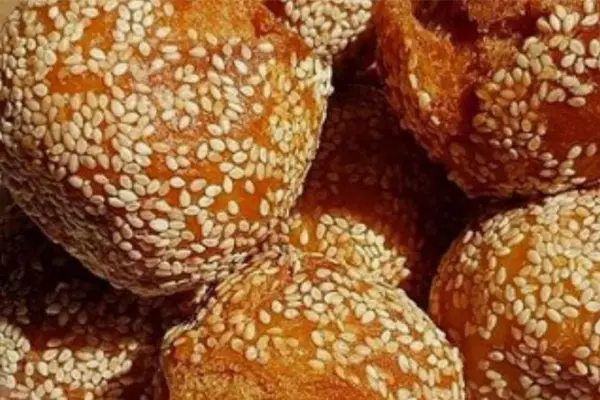Binangkal is a beloved Filipino snack that combines simple ingredients to create delightful sesame-coated dough balls. Originating from the Visayas region, this treat has gained popularity across the country for its crunchy exterior and soft, chewy interior. Made primarily from flour, sugar, and baking powder, binangkal is deep-fried to perfection and rolled in sesame seeds, offering a unique texture and flavor that entices the taste buds of all ages.
FAQs about Binangkal
What are the main ingredients in binangkal?
The primary ingredients include all-purpose flour, sugar, baking powder, salt, milk or water, and sesame seeds for coating.
How do you achieve the perfect texture for binangkal?
The key to the perfect texture is in the dough’s consistency and the heat of the oil. The dough should be soft but not sticky, and the oil should be moderately hot to ensure the binangkal is cooked thoroughly without burning the sesame seeds.
Can binangkal be baked instead of fried?
Yes, binangkal can be baked for a healthier alternative. However, the texture might slightly differ from the traditional fried version, being less crispy.
How long can you store binangkal?
Binangkal can be stored in an airtight container at room temperature for up to 3 days or refrigerated for up to a week.
Are there any variations to the classic binangkal recipe?
Variations may include adding vanilla extract or coconut milk to the dough for added flavor. Some also experiment with filling the center of the dough balls with chocolate or fruit jams.
Is binangkal suitable for vegetarians?
Yes, binangkal is suitable for vegetarians as it does not contain any meat products. Vegans may need to substitute the milk for a plant-based alternative.
Conclusion
Binangkal is more than just a snack; it’s a delightful experience that brings a piece of Filipino culinary tradition to your kitchen. Its simple ingredients, coupled with the joy of making and sharing, make binangkal a favorite treat for gatherings or a cozy afternoon at home. Whether you stick to the traditional recipe or explore variations, the essence of binangkal remains a testament to the rich and diverse culinary culture of the Philippines.

BINANGKAL RECIPE
Description
Ingredients
- 4¼ cups all-purpose flour
- 1 cup white sugar
- 2 tsp. baking powder
- 1 tsp. baking soda
- ⅔ cup evaporated milk
- 2 tbsp. oil
- 1 tsp. vanilla essence or vanilla extract
- Cooking oil for deep frying
- 1 cup sesame seeds
Instructions
- In a bowl, combine the flour, baking powder, baking soda, and sugar. Stir well.
- In a separate bowl, whisk together the oil, milk, and vanilla extract.
- Gradually mix the dry ingredients with the wet ingredients until well combined.
- Thoroughly mix until you achieve a homogenous dough.
- Use two tablespoons to scoop the dough, forming it into a round ball. Roll this ball in sesame seeds until fully coated.
- With the palm of your hands, gently roll the sesame-coated balls to ensure they are well covered.
- Heat cooking oil in a deep pan over medium heat.
- Carefully deep-fry the dough balls until they are golden brown.
- Once fried, remove the binangkal from the oil and let any excess oil drain off.
- Serve warm and enjoy your deliciously crunchy and soft Binangkal with your favorite beverage.
Notes
- Ensure the sesame seeds fully coat each dough ball to achieve a crunchy texture and prevent the dough from absorbing too much oil.
- Adjust the sweetness according to your preference by increasing or decreasing the sugar amount.
- For a lighter version, try air-frying binangkal with minimal oil, though the texture may vary from the traditional method.
- Experimenting with different types of milk (such as coconut milk) can add a unique flavor to your binangkal.
- The dough can be prepared ahead of time and stored in the refrigerator overnight, making the cooking process quicker and easier.

